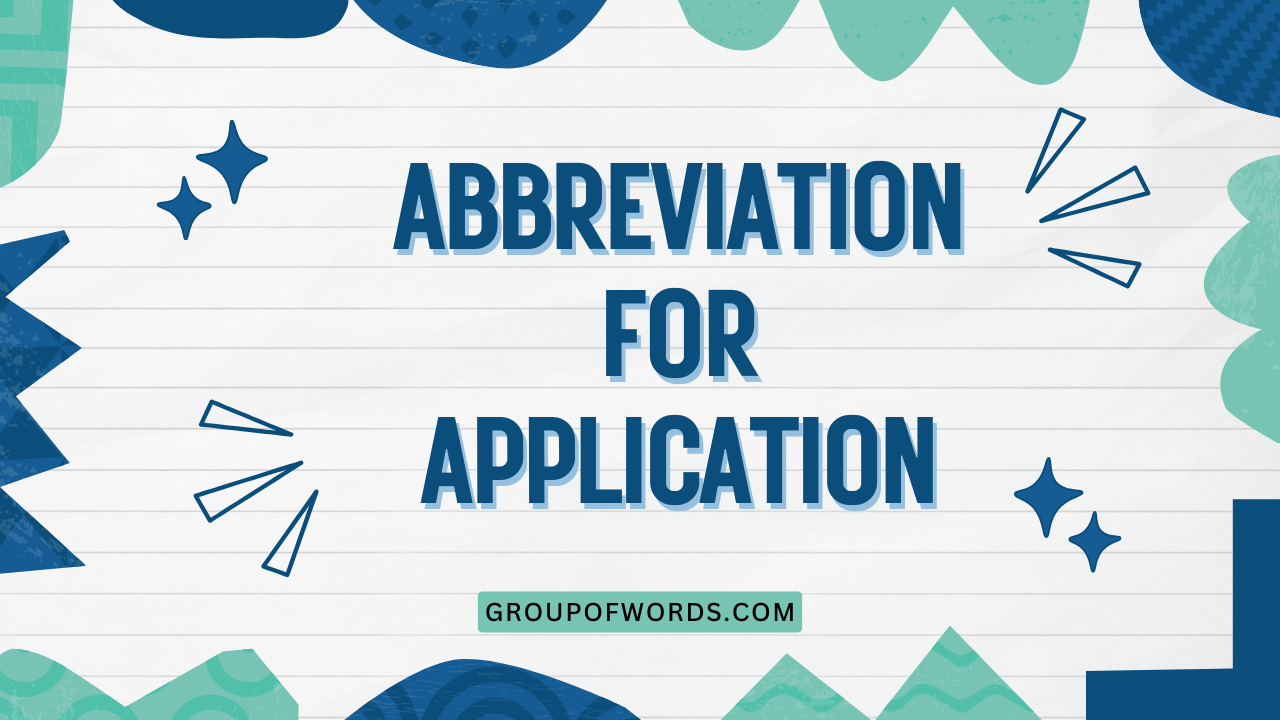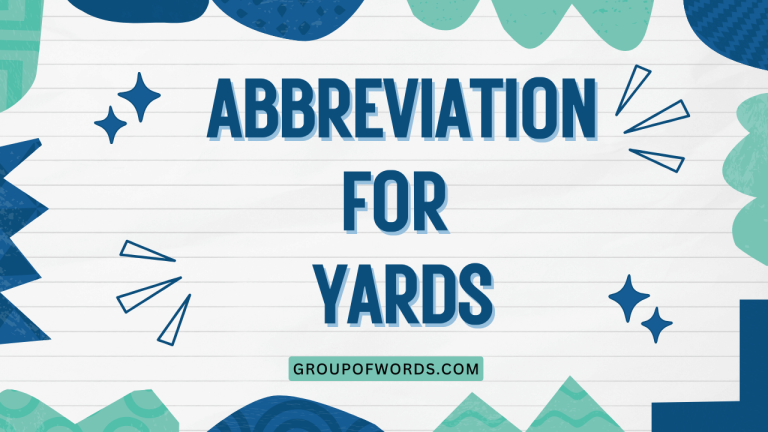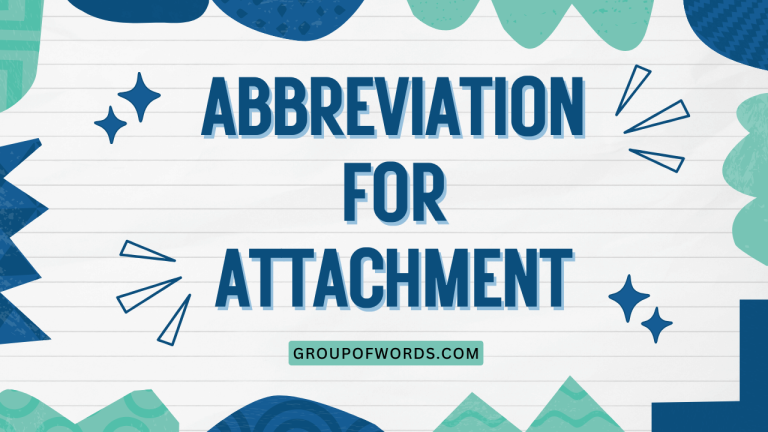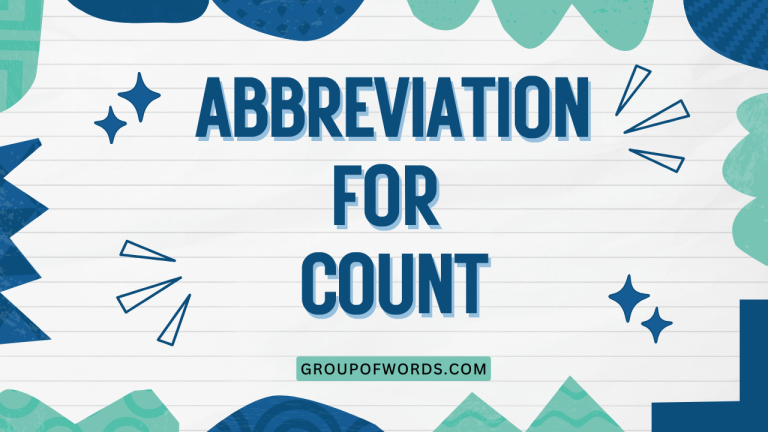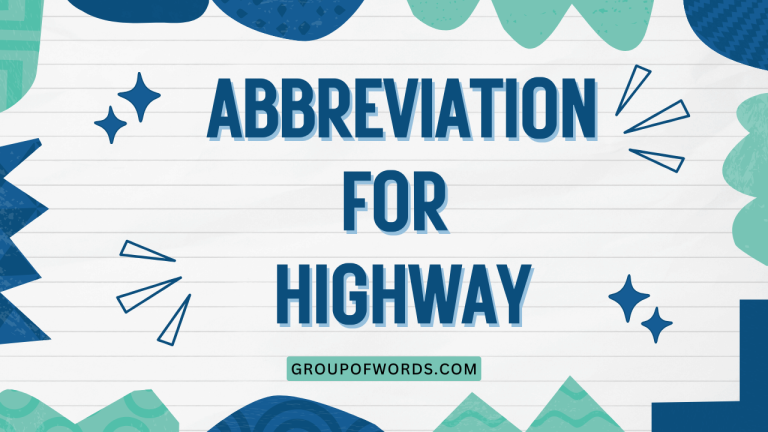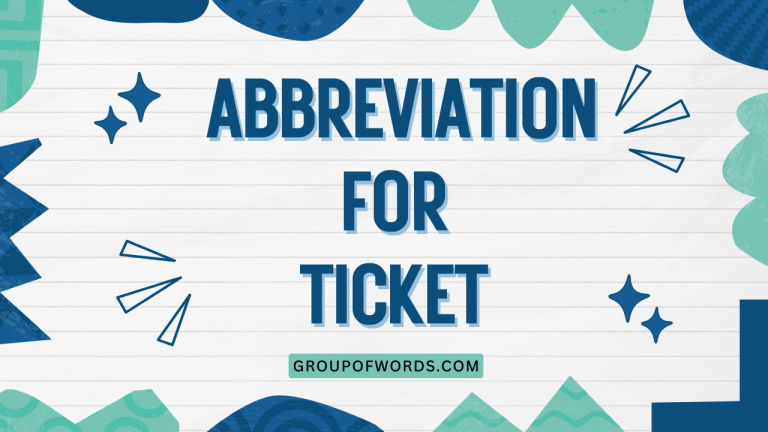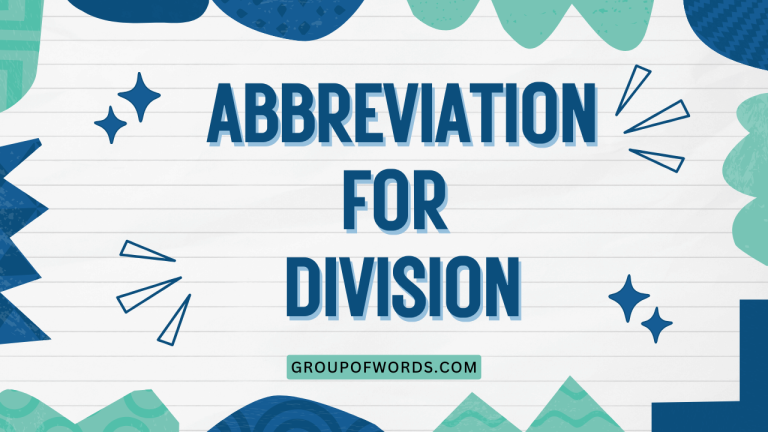Understanding the Abbreviation for “Application”: A Comprehensive Guide
In the realm of formal communication, especially within professional and academic settings, abbreviations serve as indispensable tools for streamlining language and conserving space. One such abbreviation, commonly encountered yet often misused, is the abbreviation for “application.” This article aims to provide a comprehensive understanding of the correct abbreviation for “application,” along with its various contexts, usage rules, and potential pitfalls.
Whether you are a student, a job seeker, or a seasoned professional, mastering the nuances of this abbreviation will enhance your written communication and ensure clarity in your documents.
This article is designed for anyone wishing to improve their understanding of English grammar and formal writing conventions. By the end of this guide, you will be equipped with the knowledge and practical skills to use the abbreviation for “application” accurately and confidently in a variety of settings, thereby enhancing the professionalism and clarity of your written work.
Table of Contents
- Introduction
- Definition of Abbreviation for “Application”
- Structural Breakdown
- Types and Categories of Applications
- Examples of Abbreviation Usage
- Usage Rules for Abbreviation
- Common Mistakes and How to Avoid Them
- Practice Exercises
- Advanced Topics
- Frequently Asked Questions (FAQ)
- Conclusion
Definition of Abbreviation for “Application”
The most widely accepted abbreviation for “application” is “app.” This abbreviation is commonly used in contexts where space is limited or where frequent repetition of the full word would be cumbersome. It’s essential to recognize that context plays a crucial role in determining whether the abbreviation is appropriate. For instance, in formal letters or legal documents, it’s generally preferable to spell out the full word “application” to maintain a professional and unambiguous tone.
The abbreviation “app” functions as a noun substitute, standing in for the full noun “application.” Its usage is primarily seen in informal or technical contexts, such as in software development, technology documentation, and internal communications. While “app” is the most common abbreviation, it is crucial to understand the different types of applications and the contexts in which the abbreviation is suitable.
In summary, “app” is a shortened form of “application” that is used to save space and time. However, it’s crucial to exercise discretion and consider the formality of the context before deciding to use the abbreviation.
Structural Breakdown
The abbreviation “app” is derived from the first three letters of the word “application.” This is a common method of abbreviation, especially for shorter words. There is no period after “app” because it is a truncation, not an initialism or acronym.
A truncation is a word shortened by omitting letters from the end, while an initialism uses the first letter of each word (e.g., FBI for Federal Bureau of Investigation), and an acronym forms a new pronounceable word from the first letters (e.g., NASA for National Aeronautics and Space Administration).
Understanding the structural derivation helps in remembering and correctly using the abbreviation. The simplicity of the structure also makes it easy to recognize and interpret in various contexts.
It’s a straightforward reduction, minimizing ambiguity while maximizing efficiency.
The structural simplicity of “app” contributes to its widespread acceptance and ease of use. This direct truncation avoids the need for complex rules or exceptions, making it a practical and accessible abbreviation for everyday communication.
Types and Categories of Applications
Understanding the different types of applications can help clarify the context in which the abbreviation “app” is most appropriate. Applications can be broadly categorized based on their purpose and function.
Software Applications
Software applications are programs designed to perform specific tasks on computers and other electronic devices. These are the most common type of application where the abbreviation “app” is used.
Examples include mobile apps, desktop apps, and web apps.
Job Applications
Job applications are formal documents submitted to potential employers to express interest in a job opening. In this context, it is generally not appropriate to use the abbreviation “app.” The full word “application” should be used to maintain professionalism.
Financial Applications
Financial applications include forms and documents used to apply for loans, credit cards, mortgages, and other financial products. Similar to job applications, it is best to avoid using the abbreviation “app” in these formal documents.
Academic Applications
Academic applications are used to apply for admission to schools, colleges, and universities. Again, maintaining formality is key, and the full word “application” is preferred over the abbreviation.
Other Types of Applications
Various other types of applications exist, such as applications for permits, licenses, and memberships. In most of these formal contexts, using the full word “application” is advisable.
Examples of Abbreviation Usage
The following examples illustrate how the abbreviation “app” can be used in various contexts. Note the distinction between appropriate and inappropriate uses of the abbreviation.
Software Applications Examples
The abbreviation “app” is widely accepted when referring to software applications, especially in informal and technical contexts. The following table provides examples of its usage.
| Context | Example Sentence |
|---|---|
| Mobile App Development | “Our team is working on developing a new mobile app for iOS and Android.” |
| App Store Description | “Download our productivity app and streamline your workflow.” |
| Technical Documentation | “The app requires the latest version of the operating system.” |
| Internal Communication | “Let’s schedule a meeting to discuss the features of the new app.” |
| Software Review | “This app is highly rated for its user-friendly interface.” |
| Marketing Material | “Check out our innovative app that simplifies project management.” |
| Blog Post | “Top 5 apps for learning a new language.” |
| Social Media Post | “New update available for our app! Download now!” |
| User Manual | “To install the app, follow these steps.” |
| Project Management | “The app development is on schedule.” |
| Coding Discussion | “I’m having trouble debugging this app.” |
| Tech Newsletter | “This week’s featured app is a fitness tracker.” |
| Startup Pitch | “Our app solves a critical problem for small businesses.” |
| App Tutorial | “This video shows you how to use all the features of the app.” |
| Customer Support | “If you have any issues with the app, please contact us.” |
| Gaming Community | “This app lets you play classic games on your phone.” |
| Educational Platform | “Use our app to improve your math skills.” |
| Travel Blog | “The best travel apps to plan your next vacation.” |
| Music Industry | “Stream your favorite songs with our new music app.” |
| Photography Community | “Edit your photos with our powerful photo editing app.” |
| Health and Wellness | “Track your fitness goals with our health app.” |
| News and Media | “Stay updated with the latest news through our news app.” |
| Business Solutions | “Manage your projects efficiently with our business app.” |
| Personal Finance | “Track your expenses with our finance app.” |
| Productivity Tools | “Increase your productivity with our task management app.” |
Job Application Examples
In the context of job applications, using the abbreviation “app” is generally inappropriate. The full word “application” should be used to maintain a professional tone.
The following table illustrates the correct usage.
| Context | Correct Example | Incorrect Example |
|---|---|---|
| Cover Letter | “Thank you for considering my application for the position.” | “Thank you for considering my app for the position.” |
| Resume | “Submitted application on company website.” | “Submitted app on company website.” |
| Email Correspondence | “I am following up on my application.” | “I am following up on my app.” |
| Application Form | “Please complete the application in full.” | “Please complete the app in full.” |
| Interview | “I submitted my application last week.” | “I submitted my app last week.” |
| Recruitment Agency | “We received your application for the role.” | “We received your app for the role.” |
| Job Posting | “To apply, submit your application online.” | “To apply, submit your app online.” |
| Follow-up Email | “I am eager to discuss my application further.” | “I am eager to discuss my app further.” |
| HR Department | “Your application is under review.” | “Your app is under review.” |
| Job Fair | “We are accepting applications at our booth.” | “We are accepting apps at our booth.” |
| Company Website | “Submit your job application through our portal.” | “Submit your job app through our portal.” |
| LinkedIn Message | “I am interested in the application you posted.” | “I am interested in the app you posted.” |
| Reference Letter | “I highly recommend this candidate’s application.” | “I highly recommend this candidate’s app.” |
| Thank You Note | “Thank you for reviewing my application.” | “Thank you for reviewing my app.” |
| Acceptance Letter | “We are pleased to accept your application.” | “We are pleased to accept your app.” |
| Rejection Letter | “We regret to inform you that your application was not selected.” | “We regret to inform you that your app was not selected.” |
| Internal Memo | “All applications must be submitted by Friday.” | “All apps must be submitted by Friday.” |
| Performance Review | “The application process has been streamlined.” | “The app process has been streamlined.” |
| Training Manual | “Follow the steps outlined in the application guide.” | “Follow the steps outlined in the app guide.” |
| Employee Handbook | “The employee application form can be found online.” | “The employee app form can be found online.” |
Financial Application Examples
Similar to job applications, financial applications require a formal tone, and the full word “application” should be used. The following table illustrates this.
| Context | Correct Example | Incorrect Example |
|---|---|---|
| Loan Application | “Please review my loan application.” | “Please review my loan app.” |
| Credit Card Application | “I submitted my credit card application online.” | “I submitted my credit card app online.” |
| Mortgage Application | “The mortgage application requires detailed financial information.” | “The mortgage app requires detailed financial information.” |
| Banking Form | “Complete the application for a new savings account.” | “Complete the app for a new savings account.” |
| Financial Advisor | “We will process your application promptly.” | “We will process your app promptly.” |
| Insurance Policy | “The insurance application must be filled out accurately.” | “The insurance app must be filled out accurately.” |
| Investment Account | “Open an investment account with a simple application process.” | “Open an investment account with a simple app process.” |
| Tax Form | “Include this form with your tax application.” | “Include this form with your tax app.” |
| Financial Report | “The application for funding was approved.” | “The app for funding was approved.” |
| Customer Service | “If you have questions about your application, contact us.” | “If you have questions about your app, contact us.” |
| Internal Audit | “Review the financial application for accuracy.” | “Review the financial app for accuracy.” |
| Compliance Department | “Ensure the application complies with all regulations.” | “Ensure the app complies with all regulations.” |
| Accounting Software | “The application generates detailed financial reports.” | “The app generates detailed financial reports.” |
| Budget Planning | “The application helps in managing your budget.” | “The app helps in managing your budget.” |
| Investment Strategy | “Develop a sound investment strategy with our application.” | “Develop a sound investment strategy with our app.” |
| Wealth Management | “Manage your wealth effectively with our financial application.” | “Manage your wealth effectively with our financial app.” |
| Retirement Planning | “Plan your retirement with our comprehensive application.” | “Plan your retirement with our comprehensive app.” |
| Financial Literacy | “Improve your financial literacy with our educational application.” | “Improve your financial literacy with our educational app.” |
| Economic Analysis | “The application provides insights into economic trends.” | “The app provides insights into economic trends.” |
| Market Research | “Conduct market research using our application.” | “Conduct market research using our app.” |
Usage Rules for Abbreviation
The use of the abbreviation “app” is governed by specific rules to ensure clarity and appropriateness. Here are some key guidelines:
- Context Matters: Use “app” primarily in informal or technical contexts, especially when referring to software applications. Avoid using it in formal documents such as job applications, financial applications, or academic applications.
- Clarity: Ensure that the context makes it clear that “app” refers to a software application. If there’s a possibility of ambiguity, use the full word “application.”
- Consistency: Within a document or communication, maintain consistency in whether you use the abbreviation or the full word. Avoid switching back and forth unless there’s a clear reason to do so.
- Audience: Consider your audience. If you’re communicating with a technical audience familiar with software terminology, “app” is generally acceptable. If your audience is less familiar with such terms, using the full word “application” may be more appropriate.
- Formal vs. Informal: In formal writing, always use the full word “application.” In informal settings like internal emails or blog posts, “app” is acceptable.
Understanding these rules will help you use the abbreviation “app” correctly and confidently in various situations. By considering the context, audience, and level of formality, you can ensure that your communication is clear and professional.
Common Mistakes and How to Avoid Them
Several common mistakes occur when using the abbreviation “app.” Being aware of these pitfalls can help you avoid errors and ensure correct usage.
- Using “app” in Formal Documents: One of the most common mistakes is using “app” in formal documents such as job applications, financial applications, or academic applications. Always use the full word “application” in these contexts.
- Lack of Clarity: Using “app” without sufficient context can lead to confusion. Ensure that the context makes it clear you are referring to a software application.
- Inconsistency: Switching between “app” and “application” within the same document can be confusing. Maintain consistency throughout your writing.
- Incorrect Capitalization: “App” should generally be lowercase unless it starts a sentence or is part of a proper noun.
The table below illustrates some common mistakes and their corrections:
| Incorrect Example | Correct Example | Explanation |
|---|---|---|
| “I submitted my job app yesterday.” | “I submitted my job application yesterday.” | Using “app” in a job application is inappropriate. |
| “The app for the loan was approved.” | “The application for the loan was approved.” | Financial applications require the full word. |
| “Download the APP from the store.” | “Download the app from the store.” | “App” should be lowercase unless it starts a sentence. |
| “I use app for everything.” | “I use the app for everything.” | Missing article (“the”) before “app” can cause confusion. |
| “The app is very important process.” | “The application is a very important process.” | Using “app” when referring to a general process is incorrect. |
| “The uni app is due next week.” | “The university application is due next week.” | Academic applications should not use “app.” |
| “For more info, see the app.” | “For more information, see the application.” | If the context is formal, use the full word. |
| “The bank app is being processed.” | “The bank application is being processed.” | Financial contexts require “application.” |
Practice Exercises
Test your understanding of the abbreviation “app” with the following exercises. Determine whether the abbreviation is used correctly or if the full word “application” should be used instead.
Provide your answers and then check them against the solutions provided.
Exercise 1: Choose the Correct Word
Select the correct word (“app” or “application”) to complete each sentence.
| Question | Answer Choices |
|---|---|
| 1. I downloaded a new fitness ____ today. | a) app, b) application |
| 2. Please submit your job ____ by Friday. | a) app, b) application |
| 3. Our company developed a productivity ____ for mobile devices. | a) app, b) application |
| 4. The loan ____ requires detailed financial information. | a) app, b) application |
| 5. The ____ is available on both iOS and Android. | a) app, b) application |
| 6. Your ____ for admission has been received. | a) app, b) application |
| 7. This is the best ____ for learning a new language. | a) app, b) application |
| 8. I need to fill out an ____ for a passport. | a) app, b) application |
| 9. The company is launching a new mobile ____ next month. | a) app, b) application |
| 10. The ____ process is quite lengthy. | a) app, b) application |
Answers: 1. a, 2. b, 3. a, 4. b, 5. a, 6. b, 7. a, 8. b, 9. a, 10. b
Exercise 2: Rewrite the Sentences
Rewrite the following sentences, correcting any incorrect uses of the abbreviation “app.”
- I sent in my uni app last week.
- This banking app makes managing finances easy.
- The employee app is available on the company intranet.
- My credit card app was approved quickly.
- I found a useful app for tracking expenses.
- The scholarship app deadline is approaching.
- Download our new app from the app store.
- The app for the grant was rejected.
- The app is user-friendly and efficient.
- I submitted my med school app last month.
Answers:
- I sent in my university application last week.
- This banking app makes managing finances easy. (Correct)
- The employee app is available on the company intranet. (Correct)
- My credit card application was approved quickly.
- I found a useful app for tracking expenses. (Correct)
- The scholarship application deadline is approaching.
- Download our new app from the app store. (Correct)
- The application for the grant was rejected.
- The app is user-friendly and efficient. (Correct)
- I submitted my medical school application last month.
Advanced Topics
For advanced learners, understanding the nuances of abbreviation usage can further enhance their communication skills. Here are some advanced topics to consider:
- Contextual Ambiguity: Sometimes, the context may not clearly indicate whether “app” refers to a software application or something else. In such cases, it’s best to avoid the abbreviation altogether and use the full word “application” or rephrase the sentence for clarity.
- Regional Differences: While “app” is widely accepted, regional variations in usage may exist. Be aware of these differences and adapt your usage accordingly, especially when communicating with an international audience.
- Evolution of Language: The use of abbreviations and slang evolves over time. Stay updated on current trends and best practices in language usage to ensure your communication remains relevant and effective.
- Brand Names: Some companies incorporate “app” into their brand names. In such cases, always use the capitalization and spelling preferred by the company.
Exploring these advanced topics will help you develop a more nuanced understanding of abbreviation usage and improve your overall communication skills.
Frequently Asked Questions (FAQ)
Here are some frequently asked questions about the abbreviation for “application”:
- Is it always okay to use “app” for “application”?
No, it is not always okay to use “app” for “application.” The appropriateness of the abbreviation depends on the context. In formal documents such as job applications, financial applications, and academic applications, you should always use the full word “application.” “App” is generally acceptable in informal or technical contexts, especially when referring to software applications.
- Is there a period after “app”?
No, there is no period after “app.” It is a truncation of the word “application,” not an initialism or acronym.
- Can I use “app” in an email to my professor?
It depends on the context and your relationship with your professor. If you are discussing a software application in a casual email, “app” might be acceptable. However, in a formal email regarding an academic application or a serious matter, it is best to use the full word “application.”
- What if I’m not sure whether to use “app” or “application”?
When in doubt, it is always safer to use the full word “application.” This ensures clarity and avoids any potential for misinterpretation, especially in formal contexts.
- Are there any other abbreviations for “application”?
While “app” is the most common abbreviation for “application,” other less common abbreviations may exist in specific fields or industries. However, “app” is the most widely recognized and accepted abbreviation.
- Is “app” capitalized?
“App” should generally be lowercase unless it starts a sentence or is part of a proper noun. For example, “Download the app from the store” is correct.
- Can “app” refer to anything other than software?
While “app” primarily refers to software applications, it can technically be used to abbreviate “application” in other contexts. However, this usage is less common and can lead to confusion, so it’s best to use the full word “application” in such cases.
- How do I ensure my usage of “app” is correct?
To ensure your usage of “app” is correct, always consider the context, audience, and level of formality. If you are writing a formal document or communicating with someone you don’t know well, use the full word “application.” If you are in an informal or technical setting, “app” is generally acceptable.
Conclusion
Understanding the abbreviation for “application” and its proper usage is essential for effective communication in various contexts. While “app” is a convenient shorthand for software applications, it is crucial to recognize its limitations and avoid using it in formal settings.
By adhering to the usage rules and avoiding common mistakes, you can ensure that your written communication is clear, professional, and appropriate for the situation.
Remember to always consider the context, audience, and level of formality when deciding whether to use “app” or the full word “application.” With practice and attention to detail, you can master the nuances of this abbreviation and enhance your overall communication skills. Continue to explore and refine your understanding of English grammar to become a more confident and effective writer.
